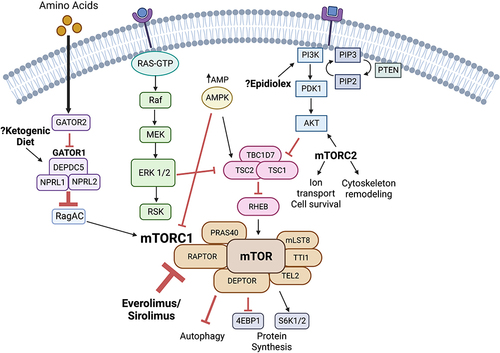Figures & data
Figure 1 The mTOR signaling pathway and TSC disease-specific therapies. Figure depicting the mTOR signaling pathway and disease-specific treatments. Everolimus and sirolimus, mTOR inhibitors, inhibit RAPTOR, a protein in the mTORC1 complex. Evidence suggests that the ketogenic diet acts through the GATOR pathway to increase inhibition on RagAC and subsequent decreased activation of mTORC1. The exact mechanism of action of Epidiolex is unknown; however, evidence suggests it may modulate the PI3K–PDK1–Akt–mTOR pathway. Figure created with Biorender.com.

Table 1 Medication management options for TSC-associated seizures by indication.Citation53,Citation65,Citation129–132
Table 2 Alternative (nonpharmacological) management options
